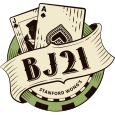Partly, And More Comments
Yes, I didn�t fully understand that his main point was about buying the extra round. I had thought that ET Fan gave a good answer for that. I missed the fact that Scooter recognized that Standing was negative EV. Sorry.
ET Fan�s �Rough Calculation� indicated that cost of Standing was 0.15 units, and the value of another round was about .1 units.
But I would caution people against directly comparing them. If you had 100% Probability that Standing get you another round, and a 0% probability that hitting would cost you a round, then you could compare them. Another way to say this is that you have to multiply the .1% times the �expected number of extra rounds�. (I will call that ENER)
However, ENER is going ot be less than 1. Even if you knew that there was exactly 1 cut left in the Shoe (before the cut card), you still have the possibility that the dealer will draw twice, pulling out the cut card and ending the shoe. So that even if you Stand, you can�t guarantee getting another round.
Also, if there are several cards left, then there is a good possibility that you would get 1 more round regardless of whether you stood or hit, so that Standing gives 0 extra rounds.
And then we have to question whether you �know� that there is exactly 1 more card that can be dealt. Personally, I can not estimate the cut card position that accurately, and I only know that the end of the shoe is near. But even if you are better than me, do you know with 100% probability that there is exactly 1 more card? Maybe there is an 80% prob of 1 more, 10% prob of 2 more, 5% of 3 more, etc.
In short, the expected gain from these types of strategies are quite small. If you have a borderline decision, within 1 point or so of the index, then this type of play may make sense. But plays like 5v6 are so lopsided that card-eating isn�t going to offset it.










